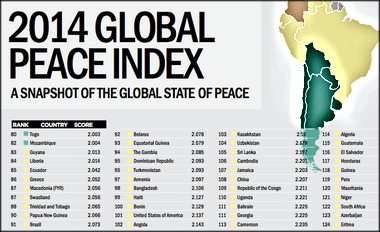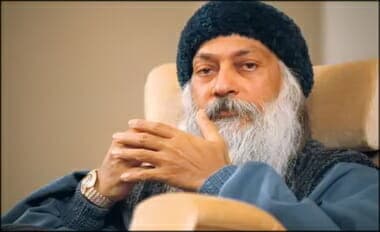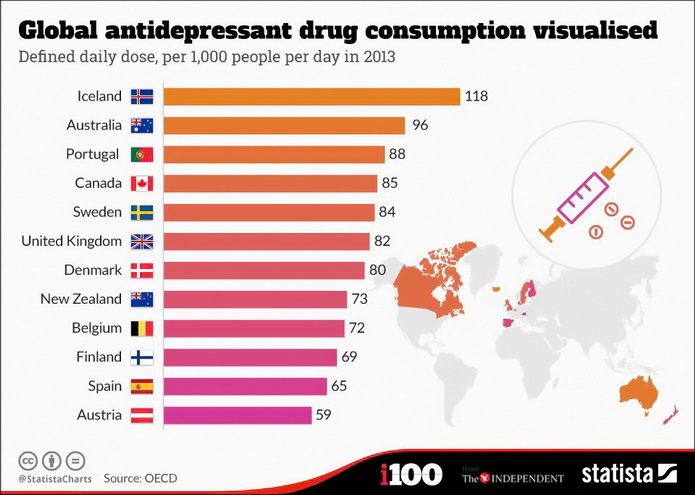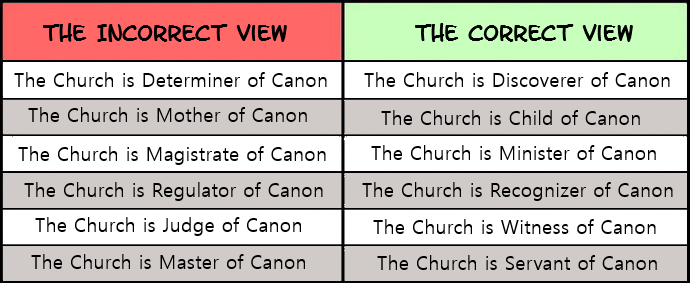Watch CPAC attendees answer the question, “If Donald Trump is the GOP nominee, could you vote for him?” (The Blaze)
Month: March 2016


Lou Dobbs On Mitt Romney and Paul Ryan (+ Santelli)
A Few Thoughts Now On The Republican Establishment & The Elites Who Are Working Not Only To Ruin The Candidacy Of Donald Trump – Lou Dobbs’ Commentary

Teaching Sandernistas a Marxist Lesson (Redistribution)
Making the Socialist Grade: Teaching Sandernistas a Marxist Lesson ~ By Mark Pastin
…Consider Arizona State University, a school not exactly known for campus radicalism. When I was teaching there in the 1980s, I would often start a new semester by asking the class who among them considered themselves to be socialists. The hands would go up—including a majority in many cases. In 20 years of teaching, whether at Indiana, Michigan, or ASU, this never changed.
When I asked my students what they thought socialism meant, they would generally recite some version of the Marxist chestnut “from each according to ability and to each according to need.” Many said that they were driven to socialism by the inequities of capitalism—and there were few on the faculty to disabuse them of the notion…
[….]
…When the majority of a class would declare themselves to be socialist, I would offer to run the class along socialist principles, such as the mandate to take from the able and give to the needy. Specifically, I offered to grade the class on a sort of reverse-curve: Those with the highest GPAs would receive the lowest grades and those with the lowest GPAs would be given the highest grades. This would be one small step to level the playing field for those less endowed with academic ability or motivation. After all, those with less academic ability or motivation were surely the victims of a rigged system in which social factors including prior education and income inequality disadvantaged the many in favor of the privileged few.
This socialist grading scheme was invariably met with outrage, especially, if unsurprisingly, among high-performing students (who made up a disproportionate number of the self-declared socialists). Some would remind me that some things are simply meant to be a matter of merit. And I heard every argument imaginable for allowing fair competition to determine outcomes. Grades, it turned out, were a currency college kids could understand.
You get the same response among students if you offer them the prospect of taking the money that subsidizes their education and using it to feed people in developing nations. Surely the potential deprivation of the students is insignificant compared with that of the individuals to be fed. Students are quick to point out that things don’t work that way, which is true, but contrary to their socialist infatuation.
Students are attracted to socialism because they have no skin in the game. To some extent, the same applies to other young people who do not yet have a significant stake in the system. Capitalist beliefs quickly come to the surface when the young are no longer playing with funny money….

Gender-Gaps, The Peace Index, and Happiest Countries
(This is the bringing together of two older posts from 3-years ago with the addition of Dr. Sommers’ video just below)
GENDER EQUALITY
The “Global Index of Peace” works in similar fashion to the Global Gender Gap Study sponsored by the World Economic Forum. Professor, scholar, and feminist, Christina Hoff Sommers explains where such endeavors go wrong:
A DEBATE ON THE PEACE-INDEX
In a prolonged debate about the above “poster,” one young gentleman brought up an issue I hadn’t really encountered all that much in my years of discussing like topics. So I wanted to isolate it and post it here for other “arm-chair apologists.” I will post his an my discussion on the matter of the “global peace index.“
Challenge
I agree, this image is highly ignorant and is very “Bumper Sticker” Now with a statement like “ATHEISM KILLS” One is tempted down the path of teleological thinking and must thus assume that Atheism is Bad as a result, but is it? I did some looking and thought to use a country with the highest percentage of Atheists as a case in point. Norway is currently one of the most Atheist countries in the world percentage wise with about 46 – 85% stated as “Atheist/Agnostic/
First Response by Me:
…question. Will Norway be able to enter a country by being “weighty” enough to get a coalition of many countries, and stop a dictator from taking over another country… keeping peace on the world stage? (First Gulf War for instance). The peace index doesn’t. If you combine all the times the US has injected itself into stopping calamity and bloodshed (WWII, the Cold War [which includes battles like Vietnam, Korea, and the like]), peace is our main business. Why? Do Western mores based in Grecian-Judeo-Christian understanding [and how it was applied in the U.S.] make the West more adamant about rights?
Second Challenge:
…you are correct the Global Peace index does not account for political weight and or the ability to step in as a country and use military force for the greater good. However, while we can all agree that Hitler was an evil man who needed to be stopped, it is hard to then make the logical bridge that all dictators must be stopped. Even if it is the right thing to do as I assume your point is stating, The United States certainty hasn’t made the effort of ridding the world of evil dictators. You state we should be valued in greater respect for our past military interventions such as the Cold War, which included battles like Vietnam, Korea, and the like. However, many of these proxie wars were less about peace as they were about ideology (The Red Scare). I do not believe such wars were wars of necessity and I do not believe that “Peace is our main business” All of the above should only contribute to a lower ranking on the Global Peace index. This is where you and I could spend much time on the deference in philosophies between the pros and cons of an interventionist militant government.
You ask, “Do Western mores based in Grecian-Jude-Christian understanding make the West more adamant about rights?” While I believe this question is open to much interpretation, I also believe I have already answered it by showing how Norway is leading by example for good while having a large percentage of it’s population non believers of Western based Grecian-Jude-Christian morals….
My Second Response:
…”RED SCARE” ~ not a scare as much as a fact. For instance, communism was overthrowing government-after-government:
☢ Poland, Czechoslovakia, Hungary, Romania, Bulgaria, Albania, Yugoslavia, and half of Germany, North Korea, Somalia, Ethiopia, Angola, Mozambique, Congo-Brazzaville, Benin, on and on.
[….]
Economic health, military stockpiles, foreign policies, are correlated with a non-belief system. So one aspect that makes the U.S. not fair well is our stockpile of military weapons. Thats One, two is countries that do score well on the global peace indicator with religious populations (Chile, Portugal, Malaysia, etc.), alongside those countries with a high atheist population that score poorly on the GPI (Russia, North Korea, Azerbaijan, etc.) seem to not make the cut in these Internet lists. Many of the countries said to be “atheist” are in fact still a) inhabited by a Christian majority, and/or b) possess a Christian history and ethos that has ALLOWED secular humanism to both exist and to openly criticize the very tenets from out of which it was born. Sweden, for instance, suffers from above average incidents of violent crime (rape being the highest in Europe). So the stats you provided break down under further investigation.
Atheism is a rejection of an absolute ethic. Virtues do not exist. You may apply what is morally good by law, but this has proven (like Nietzsche prophesied) to break down quickly with no “Law Above the Law.” Again, atheist defenders themselves admit this and I quoted them above.
Which Mussolini commented on this power struggle for ethics: “Everything I have said and done in these last years is relativism by intuition…. If relativism signifies contempt for fixed categories and men who claim to be bearers of an objective, immortal truth… then there is nothing more relativistic than fascistic attitudes and activity…. From the fact that all ideologies are of equal value, that all ideologies are mere fictions, the modern relativist infers that everybody has the right to create for himself his own ideology and to attempt to enforce it with all the energy of which he is capable.”
[….]
…to make another point on the “peace index,” which I took to the wood shed already, [includes as a negative a country that has capital punishment, or, the death penalty]. In Norway, Breivik killed 77 people (almost all children). The maximum sentence he can get for his crimes are 21-years in prison, which he got. Now, I am sure there have been white-collar extortionists (like a Madoff type schemer) that have been sentenced to near the same, if not the same. So Norway, because they do not have capital punishment, is higher on the “peace index,” but in fact they cheapen life by making a crime of killing children (77-of them) equal to $$$$ lost.
“It’s become common knowledge that Denmark, Sweden and Norway routinely rank highest on lists of the world’s happiest nations…” (The World’s Happiest Countries Take The Most Antidepressants)
(As usual, all graphics/pics are linked to other resources.) Often I hear about how much lower the crime rate is in Europe, at times having the “Peace Index” thrown into the conversation without any meditation on what exactly this “index” says. Happiness is another moniker often thrown around without any comparisons of “what constitutes ‘happiness’.” So lets deal first with happiness, and then get into the peace index and gun-control/stats.
HAPPINESS
What constitutes happiness between the States and Europe? Let’s delve — quickly — into this topic via Forbes (2006):
The average American works 25 hours a week; the average Frenchman 18; the average Italian a bit more than 16 and a half. Even the hardest-working Europeans–the British, who put in an average of 21 and half hours–are far more laid-back than their American cousins.
Compared with Europeans, Americans are more likely to be employed and more likely to work longer hours–employed Americans put in about three hours more per week than employed Frenchmen. Most important, Americans take fewer (and shorter) vacations. The average American takes off less than six weeks a year; the average Frenchman almost 12. The world champion vacationers are the Swedes, at 16 and a half weeks per year.
Of course, Europeans pay a price for their extravagant leisure. The average Frenchman produces only three-quarters as much as the average American, even though productivity per hour is slightly higher in France.
This raises more than one interesting question. First, why do Americans choose to work so much? (Or, if you prefer, why do Europeans choose to work so little?) Second, who’s happier?…..
Why indeed.
I think this is answered a bit later in a newer poll/study, found at Live Science (see also FoxNews):
Americans really do love to work, it seems, while Europeans are much happier if they skip burning the midnight oil in favor of leisure. That’s according to a new study finding longer work hours make Europeans unhappy while Americans get a very slight (albeit not statistically significant) bliss boost from the extra grind.
“Those who work longer hours in Europe are less happy than those who work shorter hours, but in the U.S. it’s the other way around,” said study author Adam Okulicz-Kozaryn, a clinical assistant professor of public policy at The University of Texas at Dallas. “The working hours’ category does not have a very big impact on the probability of happiness of Americans.” [Happiest States’ List]
The study, based on survey data, can’t tease out whether work causes happiness or unhappiness, though the researchers speculate the effect has to do with expectations and how a person measures success.
Okulicz-Kozaryn used surveys of European and American attitudes for the study. The surveys included questions about the number of hours worked and asked respondents to identify if they were “very happy,” “pretty happy” or “not too happy.”
They found that the likelihood of Europeans’ describing themselves as “very happy” dropped from around 28 percent to 23 percent as work hours climbed from under 17 hours a week to more than 60 hours per week. Americans, on the other hand, held steady, with about a 43 percent chance of describing themselves as happy regardless of working hours.
The results held even after the researchers accounted for possible confounding factors, such as age, marital status and household income….
[….]
“Happiness depends upon satisfaction with your income, satisfaction with you family life, satisfaction with your work, satisfaction with your health,” he said.
“People trade off work and leisure,” Easterlin explained, and so any attempt to explain the results of this study would have to take that into account. “[Happiness] has to do with what you think the goals are of people in the two countries.”
American happiness is a pursuit important enough to include in one of our Founding documents, right next to life and liberty. This “pursuit” we are use to (and is being harmed/deformed by the welfare state growing larger) creates innovation. For instance David Mamet notes the following:
In my family, as in yours, someone regularly says, “Hey, you know what would be a good idea … ?” And then proceeds to outline some scheme for making money by providing a product or service the need for which has just occurred to him. He and the family fantasize about and discuss and elaborate this scheme. Inherent in this fantasy is the unstated but ever-present truth that, given sufficient capital and expertise or the access to the same, the scheme might actually be put into operation (as, indeed, constantly, throughout our history, such schemes have), bettering the lives of the masses and bringing wealth to their creators. Do you believe such conversations take place in Syria? In France?
David Mamet, The Secret Knowledge: On the Dismantling of American Culture (New York, NY: Sentinel Publishing, 2011), [FN] 120.
Some can be happy with less pay and trusting the state will care for them enough to go on 12-week vacations. While doctors, for instance, may enjoy a month-long vacation in France [mandatory vacation], this “happiness” rather than hard-work often has deadly consequences, one being — for instance — nearly 15,000 people dying in a heat wave in France in 2003 (a record for Europe… previously Italy held it with 3,000).
- …Health Minister Jean-Francois Mattei has ordered a separate special study this month to look into a possible link with vacation schedules after doctors strongly denied allegations their absence put the elderly in danger. The heat wave hit during the August vacation period, when doctors, hospital staff and many others take leave…
So Europe being “happier” than the United States is something of a misnomer.
FAUX HAPPINESS
About the above graphic:
…the moods of Scandinavian nations may be more closely linked to medicine than anything else. The chart depicts the relative amounts of antidepressant consumption across several different European nations. Iceland — not technically in Scandinavia but nearby — leads with 118 daily doses per 1,000 people. Denmark, Sweden and Finland are all close behind…. The report notes that the prevalence of antidepressants in Europe is a growing trend. “In all European countries for which data is available, the consumption of antidepressants has increased a lot over the decade, by over 80% on average across EU member states,” it reads. According to the report, 30 percent of Icelandic women over the age of 65 had an antidepressant prescription in 2008.
It may seem paradoxical that the world’s happiest nations also take the most antidepressants.
“Life, Liberty and the pursuit of Happiness.” We pursue it, not expecting government to provide it for us. If government doeas, a simple economic law states — basically — that creativity is squelched:
- “A fundamental principle of information theory is that you can’t guarantee outcomes… in order for an experiment to yield knowledge, it has to be able to fail. If you have guaranteed experiments, you have zero knowledge”
George Gilder, Interview by Dennis Prager {Editors note: this is how the USSR ended up with warehouses FULL of “widgets” (things made that it could not use or people did not want) no one needed in the real world.}
PEACEFUL/SAFE
When people do, austerity more-often-than-not leads to riots and collapse. And why in many European countries the EU is being rejected, and conservative parties are getting landslides (like UKIP in the UK). People are fed up with horrible health care, no incentive to succeed, taxes, crime, and immigration issues. 
Okay, I feel my point has been made. Innovation comes by a drive to work hard, as much as you wish in fact… whereas Europe forces people to work less, and thus is stagnant in relation to this said innovation. What about crime rates and violence, yes, even gun violence? Lets see. Firstly, I deal with some of the more pressing issues with the Peace Index here. But in this conversation, I wanted to deal with violent crimes… which include more than gun violence. As Europe gives birth to a generation divorced of their cultural heritage, you will see a rise in violence, and then a rise in reaction to it. Maybe an over-reaction?
VIOLENCE
Firstly, if you are an in-depth kind of reader, at this link you will find multiple debates and appearances of John Lott on CNN and other programs discussing gun crime. But let’s deal with a place that has for years made gun ownership illegal, the United Kingdom. Here is the headline from The Telegraph on the topic:
Analysis of figures from the European Commission showed a 77 per cent increase in murders, robberies, assaults and sexual offences in the UK since Labour came to power.
The total number of violent offences recorded compared to population is higher than any other country in Europe, as well as America, Canada, Australia and South Africa.
Opposition leaders said the disclosures were a “damning indictment” of the Government’s failure to tackle deep-rooted social problems.
The figures combined crime statistics for England, Wales, Scotland and Northern Ireland.
The UK had a greater number of murders in 2007 than any other EU country – 927 – and at a relative rate higher than most western European neighbours, including France, Germany, Italy and Spain.
It also recorded the fifth highest robbery rate in the EU, and the highest absolute number of burglaries, with double the number of offences recorded in Germany and France.
Overall, 5.4 million crimes were recorded in the UK in 2007 – more than 10 a minute – second only to Sweden.
Chris Grayling, shadow home secretary, said: “This is a real damning indictment of this government’s comprehensive failure over more than a decade to tackle the deep rooted social problems in our society, and the knock-on effect on crime and anti-social behaviour.
“We’re now on our fourth Home Secretary in this parliament, and all we are getting is a rehash of old initiatives that didn’t work the first time round. More than ever Britain needs a change of direction.”
The figures were sourced from Eurostat, the European Commission’s database of statistics. They are gathered using official sources in the countries concerned such as the national statistics office, the national prison administration, ministries of the interior or justice, and police.
A breakdown of the statistics, which were compiled into league tables by the Conservatives, revealed that violent crime in the UK had increased from 652,974 offences in 1998 to more than 1.15 million crimes in 2007.

It means there are over 2,000 crimes recorded per 100,000 population in the UK, making it the most violent place in Europe.
Austria is second, with a rate of 1,677 per 100,000 people, followed by Sweden, Belgium, Finland and Holland.
By comparison, America has an estimated rate of 466 violent crimes per 100,000 population.
France recorded 324,765 violent crimes in 2007 – a 67 per cent increase in the past decade – at a rate of 504 per 100,000 population.
Which segways into a recent comparison in crime and gun-control in a Wall Street Journal article by Joyce Lee Malcolm, entitled: “Two Cautionary Tales of Gun Control: After a school massacre, the U.K. banned handguns in 1998. A decade later, handgun crime had doubled.” Here is an interview of her in regards to the article, followed by excerpts from said article:
Larry Elder Interview & Wall Street Journal Article
Here are portions of the article:
…Great Britain and Australia, for example, suffered mass shootings in the 1980s and 1990s. Both countries had very stringent gun laws when they occurred. Nevertheless, both decided that even stricter control of guns was the answer. Their experiences can be instructive.
In 1987, Michael Ryan went on a shooting spree in his small town of Hungerford, England, killing 16 people (including his mother) and wounding another 14 before shooting himself. Since the public was unarmed—as were the police—Ryan wandered the streets for eight hours with two semiautomatic rifles and a handgun before anyone with a firearm was able to come to the rescue.
Nine years later, in March 1996, Thomas Hamilton, a man known to be mentally unstable, walked into a primary school in the Scottish town of Dunblane and shot 16 young children and their teacher. He wounded 10 other children and three other teachers before taking his own life.
Since 1920, anyone in Britain wanting a handgun had to obtain a certificate from his local police stating he was fit to own a weapon and had good reason to have one. Over the years, the definition of “good reason” gradually narrowed. By 1969, self-defense was never a good reason for a permit.
After Hungerford, the British government banned semiautomatic rifles and brought shotguns—the last type of firearm that could be purchased with a simple show of fitness—under controls similar to those in place for pistols and rifles. Magazines were limited to two shells with a third in the chamber.
Dunblane had a more dramatic impact. Hamilton had a firearm certificate, although according to the rules he should not have been granted one. A media frenzy coupled with an emotional campaign by parents of Dunblane resulted in the Firearms Act of 1998, which instituted a nearly complete ban on handguns. Owners of pistols were required to turn them in. The penalty for illegal possession of a pistol is up to 10 years in prison.
The results have not been what proponents of the act wanted. Within a decade of the handgun ban and the confiscation of handguns from registered owners, crime with handguns had doubled according to British government crime reports. Gun crime, not a serious problem in the past, now is. Armed street gangs have some British police carrying guns for the first time. Moreover, another massacre occurred in June 2010. Derrick Bird, a taxi driver in Cumbria, shot his brother and a colleague then drove off through rural villages killing 12 people and injuring 11 more before killing himself.
[….]
Six weeks after the Dunblane massacre in 1996, Martin Bryant, an Australian with a lifelong history of violence, attacked tourists at a Port Arthur prison site in Tasmania with two semiautomatic rifles. He killed 35 people and wounded 21 others.
At the time, Australia’s guns laws were stricter than the United Kingdom’s. In lieu of the requirement in Britain that an applicant for permission to purchase a gun have a “good reason,” Australia required a “genuine reason.” Hunting and protecting crops from feral animals were genuine reasons—personal protection wasn’t.
With new Prime Minister John Howard in the lead, Australia passed the National Firearms Agreement, banning all semiautomatic rifles and semiautomatic and pump-action shotguns and imposing a more restrictive licensing system on other firearms. The government also launched a forced buyback scheme to remove thousands of firearms from private hands. Between Oct. 1, 1996, and Sept. 30, 1997, the government purchased and destroyed more than 631,000 of the banned guns at a cost of $500 million.
To what end? While there has been much controversy over the result of the law and buyback, Peter Reuter and Jenny Mouzos, in a 2003 study published by the Brookings Institution, found homicides “continued a modest decline” since 1997. They concluded that the impact of the National Firearms Agreement was “relatively small,” with the daily rate of firearms homicides declining 3.2%.
According to their study, the use of handguns rather than long guns (rifles and shotguns) went up sharply, but only one out of 117 gun homicides in the two years following the 1996 National Firearms Agreement used a registered gun. Suicides with firearms went down but suicides by other means went up. They reported “a modest reduction in the severity” of massacres (four or more indiscriminate homicides) in the five years since the government weapons buyback. These involved knives, gas and arson rather than firearms.
In 2008, the Australian Institute of Criminology reported a decrease of 9% in homicides and a one-third decrease in armed robbery since the 1990s, but an increase of over 40% in assaults and 20% in sexual assaults.
What to conclude? Strict gun laws in Great Britain and Australia haven’t made their people noticeably safer, nor have they prevented massacres. The two major countries held up as models for the U.S. don’t provide much evidence that strict gun laws will solve our problems.
Ms. Malcolm, a professor of law at George Mason University Law School, is the author of several books including “Guns and Violence: The English Experience,” (Harvard, 2002).
Of course America’s worst massacre involving a school is the Bath Bombing (below), Michigan (1927). And a bomb killed 168 people in the Oklahoma City Bombing. So if someone wants to kill another… no amount of government regulation will decrease this fact:
- “…we have no government, armed with power, capable of contending with human passions, unbridled by morality and religion. Avarice, ambition, revenge and licentiousness would break the strongest cords of our Constitution, as a whale goes through a net. Our Constitution was made only for a moral and religious people. It is wholly inadequate to the government of any other.”
John Adams, first (1789–1797) Vice President of the United States, and the second (1797–1801) President of the United States. Letter to the Officers of the First Brigade of the Third Division of the Militia of Massachusetts, 11 October 1798, in Revolutionary Services and Civil Life of General William Hull (New York, 1848), pp 265-6.

I Love My White Male Privilege!
I love being constantly called a racist, a sexist, and being collectively blamed for the slave trade!

Machosauce on Trump
The reason why people are voting for Donald Trump might surprise you; but Zo will let you know you’re going to be sorely disappointed.

Professor Tony Ingraffea Admitted to NO PROOF, Under Oath
After Admitting He Has No Evidence about Dimock, Tony Ingraffea Hides and Runs (Fracknation on Facebook)
Professor Tony Ingraffea has never been shy about speaking to the press about fracking. He has been in both Gasland documentaries, given hundreds of press interviews, and spoke at rallies with anti-fracking celebrities Mark Ruffalo, Sean Lennon, and Yoko Ono.
But over the past few days, his advocacy has come back to haunt him and left him literally hiding and running away when it comes to answering difficult questions.
It has been a rough few days for Professor Ingraffea, the anti-fracking movement’s favorite scientist. Finally, he was under oath and had to tell the truth. When he didn’t, he had to face his lies being exposed. He was giving evidence in the Dimock Water Trial where the Hubert and Ely families from Pennsylvania are accusing Cabot Oil and Gas of polluting their water during fracking.
Under skillful cross-examination, Professor Ingraffea was forced to admit that he’s an anti-fracking and anti-fossil fuel “advocate.” He denied being an activist, but his face fell when lawyers for Cabot asked to show the jury photographs of him speaking in front of anti-fracking signs and participating in an Artists Against Fracking press conference alongside Ruffalo, Lennon, and Ono.
Even the lawyer for the families, Leslie Lewis, blurted out in open court that she “wasn’t thrilled” that the photos existed.
But the hits to Professor Ingraffea’s credibility kept coming. He admitted that his theory contradicted the plaintiffs’ own timeline. Under Ingraffea’s theory, the “contamination” could only have started in late 2008/early 2009 because that was when the gas drilling started; however, the plaintiffs have stated repeatedly that their water allegedly deteriorated in the summer of 2008 before the drilling Ingraffea has been blaming for the past 8 years…..
Earlier Phelim McAleer Reported
…Tony Ingraffea, Retired Cornell Professor and anti-fracking advocate tells court he has “no proof” Dimock water polluted by oil and gas company.
In an important development Ingraffea – the plaintiffs key witness in the high profile trial has admitted there is no evidence to back up his theory.
Retired professor Tony Ingraffea made the admission during a trial where the Ely and Hubert families of Dimock Pennsylvania are suing Cabot oil and gas for allegedly contaminating their water. The Dimock case is important because activists say it is ground zero for fracking contamination and the area has featured in the Gasland documentaries and hundreds of other activist events and pieces of journalism.
Under cross examination by a lawyer for Cabit Oil and Gas Professor Ingraffea was asked:
“If we follow your theory, the Gesford 3 S well is the leaking well and the well gas migrates out of it over into the other well which is as you said, is speculation – you don’t have any direct proof of that – right?”
To which Professor Ingraffea replied:
“Yes”.
Ingraffea’s admission of no proof is the latest in a series of setbacks for the plaintiffs in the case.

A Short Study Defining “Inerrancy” (Updated)
In the appendix to Misquoting Jesus, added to the paperback version, there is a Q&A section. I do not know who the questioner is, but it is obviously someone affiliated with the editors of the book. Consider this question asked of Ehrman:
✦ Bruce Metzger, your mentor in textual criticism to whom this book dedicated, has said that there is nothing in these variants of Scripture that challenges any essential Christian beliefs (e.g., the bodily resurrection of Jesus or the Trinity). Why do you believe these core tenets Of Christian orthodoxy to be in jeopardy based on the scribal errors you discovered in the biblical manuscripts?
Note that the wording of the question is not “Do you believe…” but “Why do you believe these core tenets of Christian orthodoxy to be in jeopardy…?” This is a question that presumably came from someone who read the book very carefully. How does Ehrman respond?
- The position I argue for in Misquoting Jesus does not actually stand at odds with Prof. Metzger’s position that the essential Christian beliefs are not affected by textual variants in the manuscript tradition of the New Testament.
Suffice it to say that viable textual variants that disturb cardinal doctrines found in the NT have not yet been produced.
Daniel B. Wallace, Revisiting the Corruption of the New Testament (Grand Rapids, MI: Kregal Publications, 2011), 54-55.
So with all that in mind (one should familiarize themselves with the first part of this), can we then define what we mean by biblical inerrancy, of course my favorite definition comes from the main text I used at the seminary I attended. I will also give definitions from some other main text that other seminaries use as well.
“…inerrancy means that Scripture in the original manuscripts[1] does not affirm anything that is contrary to fact.”[2]
In case you didn’t catch what that sentence meant is “that the Bible always tells the truth, and that it always tells the truth concerning everything it talks about.”[3]
In the index in the back under “inerrancy” you find some of the following topics under that heading: allows for free quotation; allows for ordinary language; allows for round numbers; allows for textual variants; allows for uncommon grammar; allows for vague statements; human language doesn’t prevent. I will choose one example from this list so you can get the “gist” of what Grudem is saying:
A similar consideration applies to numbers when used in measuring or in counting. A reporter can say that 8,000 men were killed in a certain battle without thereby implying that he has counted everyone and that there are not 7,999 or 8,001 dead soldiers. If roughly 8,000 died, it would of course be false to say that 16,000 died, but it would not be false in most contexts for a reporter to say that 8,000 men died when in fact 7,823 or 8,242 had died: the limits of truthfulness would depend on the degree of precision implied by the speaker and expected by his original hearers.
This is also true for measurements. Whether I say, “I don’t live far from my office,” or “I live a little over a mile from my office,” or “I live one mile from my office,” or “I live 1.287 miles from my office” all four statements are still approximations to some degree of accuracy. Further degrees of accuracy might be obtained with more precise scientific instruments, but these would still be approximations to a certain degree of accuracy. Thus, measurements also, in order to be true, should conform to the degree of precision implied by the speaker and expected by the hearers in the original context. It should not trouble us, then, to affirm both that the Bible is absolutely truthful in everything it says and that it uses ordinary language to describe natural phenomena or to give approximations or round numbers when those are appropriate in the context.
We should also note that language can make vague or imprecise statements without being untrue. “I live a little over a mile from my office” is a vague and imprecise statement, but it is also inerrant: there is nothing untrue about it. It does not affirm anything that is contrary to fact. In a similar way, biblical statements can be imprecise and still be totally true. Inerrancy has to do with truthfulness, not with the degree of precision with which events are reported.[4]
Another definition comes from a newer systematic theological 4-volumn set, it reads as follows:
…the inspiration of Scripture is the supernatural operation of the Holy Spirit who, through the different personalities and literary styles of the chosen human authors, invested the very words of the original books of Holy Scripture, alone and in their entirety, as the very Word of God without error in all that they teach (including history and science) and is thereby the infallible rule and final authority for the faith and practice of all believers.[5]
Another popular text in seminaries defines inerrancy in this way:
By “inerrancy” we mean that as a product of supernatural inspiration the information affirmed by the sentences of the original autographs of the sixty-six canonical books of the Bible is true.
By “true” content we mean propositions that correspond to the thought of God and created reality because they are logically noncontradictory, factually reliable, and experientially viable. Therefore, as given, the Bible provides a reliable guide for healthfully experiencing the physical, mental, moral, and spiritual realities that people face in time and eternity.
To grasp the truth that was given, as fully as possible, a passage of Scripture must be taken (interpreted) by a believer in accord with its author’s purpose; degrees of precision appropriate to that purpose at that time; and its grammatical, historical, cultural, and theological contexts (all under the illumination of the Holy Spirit who inspired it).[6]
One of my favorites comes from large theological treatise, I will here only put his definition, however, the author goes on for about four pages defining some of the ideas and words used in that smaller definition:
We may now state our understanding of inerrancy: The Bible, when correctly interpreted in light of the level to which culture and the means of communication had developed at the time it was written, and in view of the purposes for which it was given, is fully truthful in all that it affirms.[7]
One must also keep in mind the psychological foreboding that all of us have. The question is thus: in order to suppress our biases as much as possible, is there a construct and model in which one should view any literary work with in order to test it internal soundness? Besides what I will again post as some rules all persons should follow in order to limit his or her preconceived values and biases they bring to the table, C. Sanders, a famous military historian, in his Introduction to Research in English Literary History, lists and explains the three basic principles of historiography. These are the bibliographical test, the internal evidence test, and the external evidence test.
Bibliographical Test
The bibliographical test is an examination of the textual transmission by which documents reach us. In other words, since we do not have the original documents, how reliable are the copies we have in regard to the number of manuscripts (MSS and the time interval between the original and the extant (currently existing) copies?
Internal Evidence
Internal Evidence, of which John Warwick Montgomery writes that literary critics still follow Aristotle’s dictum that “the benefit of the doubt is to be given to the document itself, not arrogated by the critic to himself.” therefore, one must listen to the claims of the document under analysis, and do not assume fraud or error unless the author disqualified himself by contradictions or known factual inaccuracies. As Dr. Horn continues:
“Think for a moment about what needs to be demonstrated concerning a ‘difficulty’ in order to transfer it into the category of a valid argument against doctrine. Certainly much more is required than the mere appearance of a contradiction. First, we must be certain that we have correctly understood the passage, the sense in which it uses words or numbers. Second, that we possess all available knowledge in this matter. Third, that no further light can possibly be thrown on it by advancing knowledge, textual research, archaeology, etc…. Difficulties do not constitute objections. Unresolved problems are not of necessity errors. This is not to minimize the area of difficulty; it is to see it in perspective. Difficulties are to be grappled with and problems are to drive us to seek clearer light; but until such time as we have total and final light on any issue we are in no position to affirm, ‘Here is a proven error, an unquestionable objection to an infallible Bible.’ It is common knowledge that countless ‘objections’ have fully been resolved since this century began.” (see more)
External Evidence
Do other historical materials confirm or deny the internal testimony provided by the documents themselves? In other words, what sources are there – apart from the literature under analysis – that substantiate its accuracy, reliability, and authenticity?[8]
Of course there will be people who refuse to use the tools that literary critics and legal scholars have devised to keep as much prejudice out as possible. My final story I wish to share with the reader explains what this looks like better than I ever could:
Psychological Prejudice
But even a sound epistemic system, flawless deductive reasoning, and impeccable inductive procedure does not guarantee a proper conclusion. Emotional bias or antipathy might block the way to the necessary conclusion of the research. That thinkers may obstinately resist a logical verdict is humorously illustrated by John Warwick Montgomery’s modern parable:
Once upon a time (note the mystical cast) there was a man who thought he was dead. His concerned wife and friends sent him to the friendly neighborhood psychiatrist determined to cure him by convincing him of one fact that contradicted his beliefs that he was dead. The fact that the psychiatrist decided to use was the simple truth that dead men do not bleed. He put his patient to work reading medical texts, observing autopsies, etc. After weeks of effort the patient finally said, “All right, all right! You’ve convinced me. Dead men do not bleed.” Whereupon the psychiatrist stuck him in the arm with a needle, and the blood flowed. The man looked down with a contorted, ashen face and cried, “Good Lord! Dead men bleed after all!”
Emotional prejudice is not limited to dull-witted, the illiterate, and poorly educated. Philosophers and theologians are not exempt from the vested interests and psychological prejudice that distort logical thinking. The question of the existence of God evokes deep emotional and psychological prejudice. People understand that the question of the existence of God is not one that is of neutral consequence. We understand intuitively, if not in terms of its full rational implication, that the existence of an eternal Creator before whom we are ultimately accountable and responsible is a matter that touches the very core of life.[9]
And I would be remiss to note how the Christian world looks at what “the inspired Word of God” means to the individuals involved in the writing of Scripture. Do these lose their person-hood? Do they become automatons? Losing all ability to self, or control like automatic writing in paganism or the occult? These are important questions:
Orr says that inspiration “must be held to include the insight given by the divine Spirit into the meaning of the history, through which holy men are enabled to write it for the instruction of all ages.” But that is never taught in the Scriptures.
Dr. Edward Young, one of the most careful and devoted scholars on the matter of the inspiration of the Scriptures, makes a slip here, we believe. He strongly teaches the verbal inspiration of the Scripture but says:
According to the Bible, inspiration is a superintendence of God the Holy Spirit over the writers of the Scriptures, as a result of which these Scriptures possess Divine authority and trustworthiness and, possessing such Divine authority and trustworthiness, are free from error.”
He is right that the Scripture has divine authority and is free from error. I do not think, however, that the term “superintendence” is the proper word for the work of the Holy Spirit. The Bible never indicates that the Holy Spirit breathed on men or superintended men as they wrote. Rather, David said, “The Spirit of the Lord spake by me” (II Sam. 23:2). And “God spake in time past unto the fathers by the prophets” (Heb. 1:1). And the men of God who wrote were rather “holy men of God spake as they were moved by the Holy Ghost” (II Pet. 1:21), or literally, “as they were borne along by the Holy Ghost.” Superintendence is too weak a word and leaves the initiative with men, with the Holy Spirit somewhere near and more or less supervising, checking. But according to the Scriptures, the initiative was with God the Holy Spirit and men are His instruments in writing the Scriptures.
Drs. Lindsell and Woodbridge say about the Bible writers:
They retained their own styles, personalities and self-command. Their personal powers were not suspended but sharpened. The Holy Spirit commanded the operation; but Moses, John and Peter remained Moses, John and Peter while writing. Because of the close, sustained, continuous, effective supervision of the Holy Spirit, the Bible is the inspired Word of God.
Now, the end the good doctors declare is correct. The Bible is the inspired Word of God. It is true that the writers were not automata. In some sense they did retain their own style and personalities and self-command. But the Bible never says that “their personal powers were… sharpened.” Whether or not their powers were sharpened we do not know. The unintended indication is that here, if men have enough illumination, enough supervision by the Holy Spirit, they could write the perfect Word of God. But that is not what the Bible teaches and surely not what Lindsell and Woodbridge intended to convey.
But Lindsell and Woodbridge correct themselves on the preceding page:
“Inspiration” is not mere “Illumination.” The Holy Spirit illumines one’s soul before he can understand spiritual truth (See I Cor. 2:10-12.) But when we speak of the inspiration of the Bible, we do not have in mind this sort of spiritual perception. We do not mean merely that the intuitive faculties of the writers were quickened, or their spiritual insights clarified. Their “inspiration” was different, not only in degree but also in kind, from the heightened powers of ordinary men, even of men known for their spiritual genius. The inspiration of the Biblical authors was unique: it was special, direct, reliable, life-giving, inerrant.
That is better. The Bible does not come from “the heightened powers of ordinary men, even of men known for their spiritual genius.” If “the intuitive faculties of the writers were quickened,” the Bible says nothing about it, and it is obviously not necessary to the kind of inspiration the Bible teaches. There is no evidence that the “intuitive faculties” of Balaam were quickened when by inspiration he gave a prophecy he did not want to give nor that the “intuitive faculties” of Caiaphas the high priest were quickened when he prophesied that Christ would die for the people, meaning something else. When God breathed out the words of the Bible, and the Bible discusses it, it never speaks of men’s “intuitive faculties” being quickened nor of their “heightened powers” nor that “their personal powers were… sharened.” I am sure that, without intending to do so and trying to someway explain the human color and imprint in the Scriptures, good men say about this more than the Bible itself says here.
Let us say it again: the Scriptures did not come from heightened powers or quickened senses nor by simple illumination of the Holy Spirit. God Himself gave the Scriptures and inspiration was far more than some superintendence or supervision of spiritually illumined men with heightened faculties.[10]
A really good article chronicling various theories on this is here: Who Wrote the Bible: God or Man? Another great post on the matter that does a bang-up job on bullet pointing the issues of textual transmission is this post: History of the Bible: How The Bible Came To Us.
All this defining and understanding above is key for any person to start dissecting Scripture (or as some would view it, scripture) on a level playing field with others who come to this conversation as well.
Here is an often heard MANTRA that Credo House deals with nicely: “You Can’t Use the Bible to Prove the Bible”
….This statement is not only wrong, but completely misunderstands its own argument; ironically, it makes the exact circular assumptions that it accuses believers of.
1. The “Bible” is not one book
When we are talking about “proving” or evidencing the truths of the Gospel message, we have to put our historian hats on (not our religious hats). The argument is meant to place Christians in this rather odd situation where they sound like they are saying the Bible is true because it says it is true. But the Bible is not one book. In fact, the term “Bible” is not in the Bible. The Bible is a collection of works that spans over a thousand years, written by dozens of authors, some who are connected, some who are not. All together there are sixty-six books in the Protestant Bible.
When we are talking about the claims of the “New Testament,” we are talking about the story of Christianity, the very foundation and apex of Christianity as it deals with the incarnation of Christ, who he was, and what he did. But even then, to say one can’t prove the New Testament with the New Testament is quite ill-informed and unreflective. The designation “New Testament” (along with its list of books) is not even in the New Testament. Like with the whole Bible, it is just a name given to a certain related corpus of writings that speaks about the story and implications of the advent of Jesus Christ. There are twenty-seven books in the New Testament.
If one were to look at this with a historian’s eye, to say we cannot use the Bible to prove or evidence the Bible is about the most misguided thing one could possibly say. What does that mean? Are you saying that we cannot use the testimony that the book of Matthew gives to evidence Mark? Or that one cannot attempt to piece together Galatians with the Book of Acts? Of course you can. In fact, you must. These twenty-seven documents, all written around the same time, all telling similar stories, must be used to prove or evidence each other. If not, the historian is not being a historian, but something entirely different.
2. One must assume the inspiration of the Bible to say the Bible can’t prove the Bible
You see, if a person says, “You can’t use the Bible to prove the Bible,” he probably doesn’t realize he is borrowing a bit from the Christian worldview in order to even make such an assertion. What is being borrowed? The idea of the basic unity of Scripture or the single-authorship of the Bible. The only way to say the Bible can’t prove the Bible is to presume the inspiration of Scripture. Otherwise, there is no reason to link the canon of Scripture together in such a way. For the non-Christian especially, the Bible should be seen as sixty-six ancient documents, all of which stand or fall on their own. In order to make them stand or fall together, one must assume a single authorship of some sort. At that point, the argument becomes self-defeating, as the very statement (“You can’t use the Bible to prove the Bible”) proves the Bible!
Footnotes
[1] For the seminary student:
The significance of the distinction between inerrant autograph and errant apograph may be seen from another angle. What difference would it make, some have asked, if the autographs did contain some of the errors that are present in the copies? Is not the end result of textual criticism and hermeneutics by both nonevangelical and evangelical essentially the same? As far as the results of textual criticism and hermeneutics as such are concerned, the answer to this last query is yes. By sound application of the canons of textual criticism, most by far of the errors in the text may be detected and corrected. And both nonevangelical and evangelical can properly exegete the critically established text. But the nonevangelical who fails to make a distinction between the inerrancy of the autographs and the errancy of the copies, after he has done his textual criticism and grammatical-historical exegesis, is still left with the question, Is the statement which I have now reached by my text-critical work and my hermeneutics true? He can only attempt to determine this on other (extrabiblical) grounds, but he will never know for sure if his determination is correct. The evangelical, however, who draws the distinction between inerrant autograph and errant apograph, once he has done proper text-critical analysis which assures him that he is working with the original text and properly applied the canons of exegesis to that text, rests in the confidence that his labor has resulted in the attainment of truth.
Some critical scholars have suggested that the distinction between inerrant autographs and errant apographs is of fairly recent vintage, indeed, an evangelical ploy to minimize the impact of the “assured results of textual criticism” upon their position. This is erroneous. Augustine’s statement, which represents the opinion generally of the Patristic Age, is a sufficient answer to demonstrate that the distinction is not a recent novelty:
I have learned to defer this respect and honor to the canonical books of Scripture alone, that I most firmly believe that no one of their authors has committed any error in writing. And if in their writings I am perplexed by anything which seems to me contrary to truth, I do not doubt that it is nothing else than either that the manuscript is corrupt, or that the translator has not followed what was said, or that I have myself failed to understand it. But when I read other authors, however eminent they may be in sanctity and learning, I do not necessarily believe a thing is true because they think so, but because they have been able to convince me, either on the authority of the canonical writers or by a probable reason which is not inconsistent with truth. And I think that you, my brother, feel the same way; moreover, I say, I do not believe that you want your books to be read as if they were those of Prophets and Apostles, about whose writings, free of all error, it is unlawful to doubt.
Robert L. Reymond, A New Systematic Theology of the Christian Faith, 2nd ed. (Nashville, TN: Thomas Nelson, 1998), 91-92.
[2] Wayne Grudem, Systematic Theology: An Introduction to Biblical Doctrine (Grand Rapids, MI: Zondervan, 1994), 90.
[3] Ibid., 91.
[4] Ibid., 91-92.
[5] Norman Geisler, Systematic Theology: Introduction: Bible, vol. I (Minneapolis, MN: Bethany House Publishers, 2002), 498.
[6] Gordon R. Lewis and Bruce A. Demarest, Integrative Theology: Three Volumes in One, vol. I (Grand Rapids, MI: Zondervan, 1996), 160-161.
[7] Millard J. Erickson, Christian Theology, 2nd ed. (Grand Rapids, MI: Baker Books/Academic, 1998), 259.
[8] Taken primarily from, Bill Wilson, ed., A Ready Defense: The Best of Josh McDowell (Nashville, TN: Thomas Nelson, 1993), 43.
[9] R.C. Sproul, John Gerstner, and Arthur Lindsley, Classical Apologetics: A Rational Defense of the Christian Faith and a Critique of Presuppositional Apologetics (Grand Rapids, MI: Zondervan, 1984), 69-70.
[10] John R. Rice, Our God Breathed Book – The Bible (Murfreesboro, TN: Sword of the Word Publishers, 1969), 72-74.
See more on the Canon here.
Extended Video Presentations
Did the Ancient Church Muzzle the Canon?
Is What We Have Now What They Wrote Then? Part 1
Part 2
This next video is a very interesting video in that it is an argument on a Temple Library and the transmission of Scripture. Great presentation… shows that there are breakthroughs in Biblical history waiting to be correlated.
Dr. John Meade – The Ancient Library from The Gospel Coalition AZ on Vimeo.
The Gospel Coalition (Januray 2015) – Lecture by John Meade. Meade speaks on the authenticity of the Bible. This video is part of ‘The Bible: Canon, Texts, and Translations’ playlist: YouTube Playlist.
This next video is a lecture from Masters Seminary, Theology I Lecture 08 “Authority and Canonicity of Scripture”
And a greatr study is with R.C. Sproul, and he makes a point that has eluded me a bit until now, and they are:
Roman Catholic View:
- The canon is an infallible collecting of infallible books.
The Protestant view:
- The canon is an fallible collecting of infallible books.

Racism Is ~ As ~ Racism Does (Oberlin College)
(See Farrakhan’s UFO sermon and other issues related to Obama’s church)
The College Fix (h/t Moonbattery):
Oberlin College professor Joy Karega, a social justice writing instructor at the Ohio-based liberal arts college, has published a series of posts on social media that largely blames the 9/11 attacks and the rise of the Islamic State and Charlie Hebdo attacks on Israel, according to a report in the campus newspaper that included numerous screenshots of the scholar’s comments.
The Tower campus newspaper reports that inflammatory remarks on the professor’s Facebook page have been published in various posts since 2015. After the Hebdo shooting last year, she posted “an ISIS terrorist pulling off a mask resembling Israeli Prime Minister Benjamin Netanyahu,” it reported. Last year, she threw up a Louis Farrakhan Nation of Islam video that suggested “’Israeli and Zionist Jews’ were behind the attacks on the World Trade Center,” it added.
[….]
The Tower report, published Feb. 25, comes just a few weeks after some 225 Oberlin College alums signed an open letter calling on the university to address what they contend is rampant anti-Semitism on campus, with the alums’ spokeswoman telling The College Fix last month: “For the last few years, I have been hearing reports about the Oberlin campus becoming increasingly hostile for students who express their Jewish identities by supporting Israel.”

Bhagwan Shree Rajneesh (Dangerous Cult Documentary)
Religion News Blog has the above video with the below commentary:
In 1981 this spiritual leader from India spent $5.75 million on a remote piece of property in Oregon and invested millions more to build Rajneeshpuram as a spiritual retreat for thousands of his red-frocked followers.
In news clips from the 1980s, Rajneeshees line the road for the Bhagwan’s daily drive-by in a vehicle from his fleet of more than 90 Rolls Royce automobiles. Rancho Rajneesh, as some called it, had its own newspaper, fire department, night club and mall.
The Rajneeshees clashed with locals over land use. The utopian desert commune collapsed after Rajneeshees were convicted of infecting four salad bars with salmonella in The Dalles, the Wasco county seat, in order to hamper voter turnout and swing an election. Other crimes included attempted murder, arson, election fraud and wiretapping. About 10 followers were imprisoned. The Bhagwan was deported for immigration violations.
751 people were poisoned in the 1984 bioterror attack. According to Wikipedia, “The incident was the first and single largest bioterrorist attack in United States history. The attack is one of only two confirmed terrorist uses of biological weapons to harm humans since 1945.”
The Rajneesh had hoped to incapacitate the voting population of the city so that their own candidates would win the local election.
The Rajneesh actually did gain political control of the nearby city of Antelope.
But by 1986 they were all gone….

David Duke Did Not Endorse Trump (Biased Media)
Black & Right has this interesting post:
Do you want to know who’s behind these surreptitious attacks on Donald J. Trump and his supporters? The fat and nervous, elite DC donor-class multi-millionaire/billionaire class, from both sides of the aisle. The hit-men are those in the media industry; print, radio and television.
In our opinion. CNN had it’s orders to use David Duke to accuse Donald Trump of being a racist to label, embarrass and compartmentalize Trump’s supporters as ‘racists’. If effective, this would discourage more people from becoming Trump supporters and quite possibly his support would decrease.
Ex-racist David Duke didn’t endorse Donald J. Trump, he hasn’t been a democrat or a leader in the KKK for over 40 years. You would have never known he was a racist if he would have remained a KKK democrat and an elected politician. a school or highway named after him…. (Robert Byrd)

Experiment Disproves Mantras about Kids and Guns
Via The Blaze!
…After the kids were let into the room, it took just 15 seconds for one of them to find the gun. Before long the gun — which was not loaded — was being passed around and pointed at other children.
The moms were visibly shaken.
Lieutenant Aaron McClelland said it was typical behavior “for young kids. Curiosity. Everything is a toy in their world. Unless we educate them and let them know sometimes it’s not.”
At the very end of the dramatic video 7-minute — after the image of kids holding the gun and the mom’s emotional reactions — the reporter shared a compelling caveat regarding the two children in the room who didn’t pick up the gun.
Watch the video to hear more about the kids who didn’t play with the gun!





